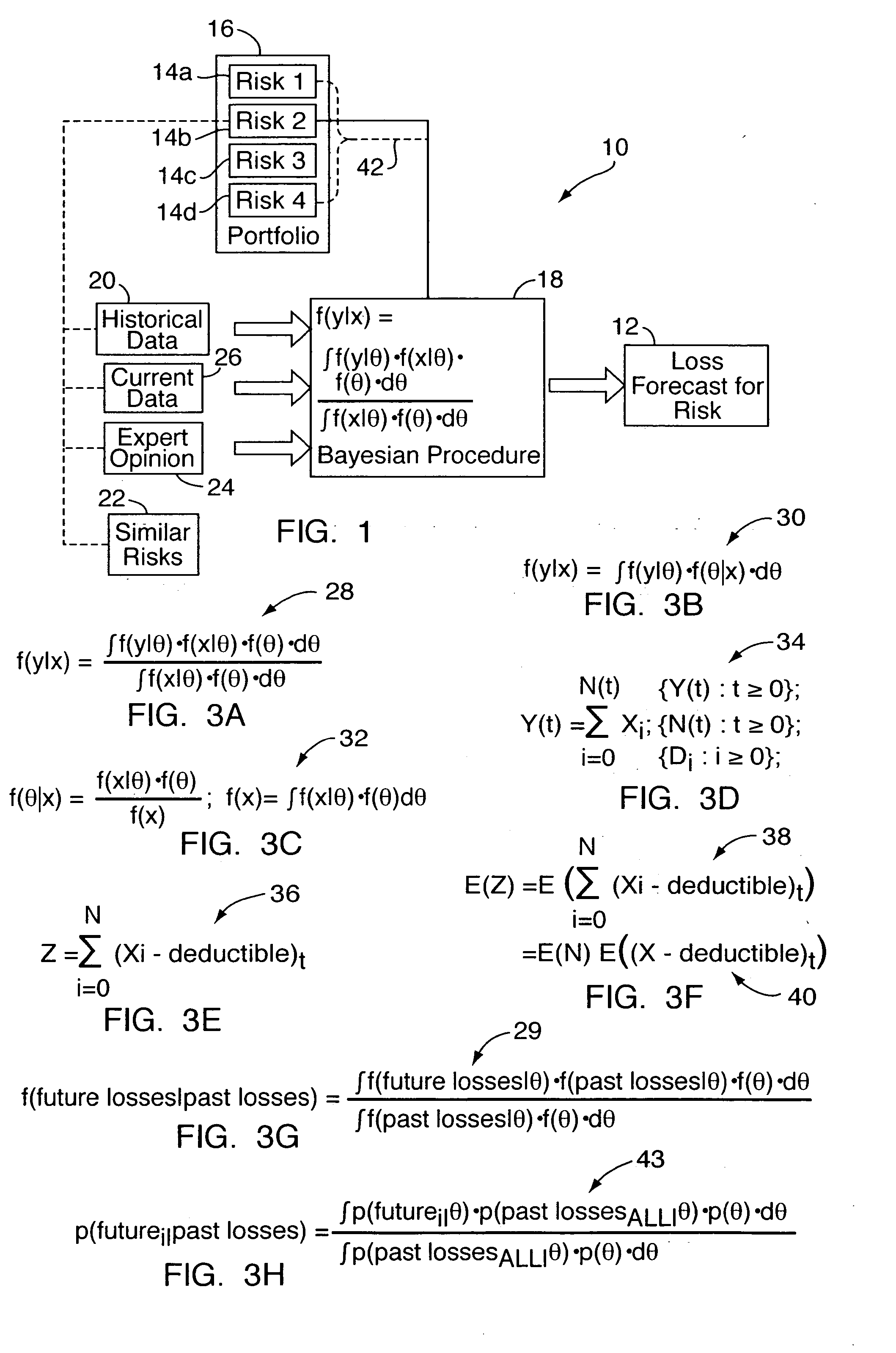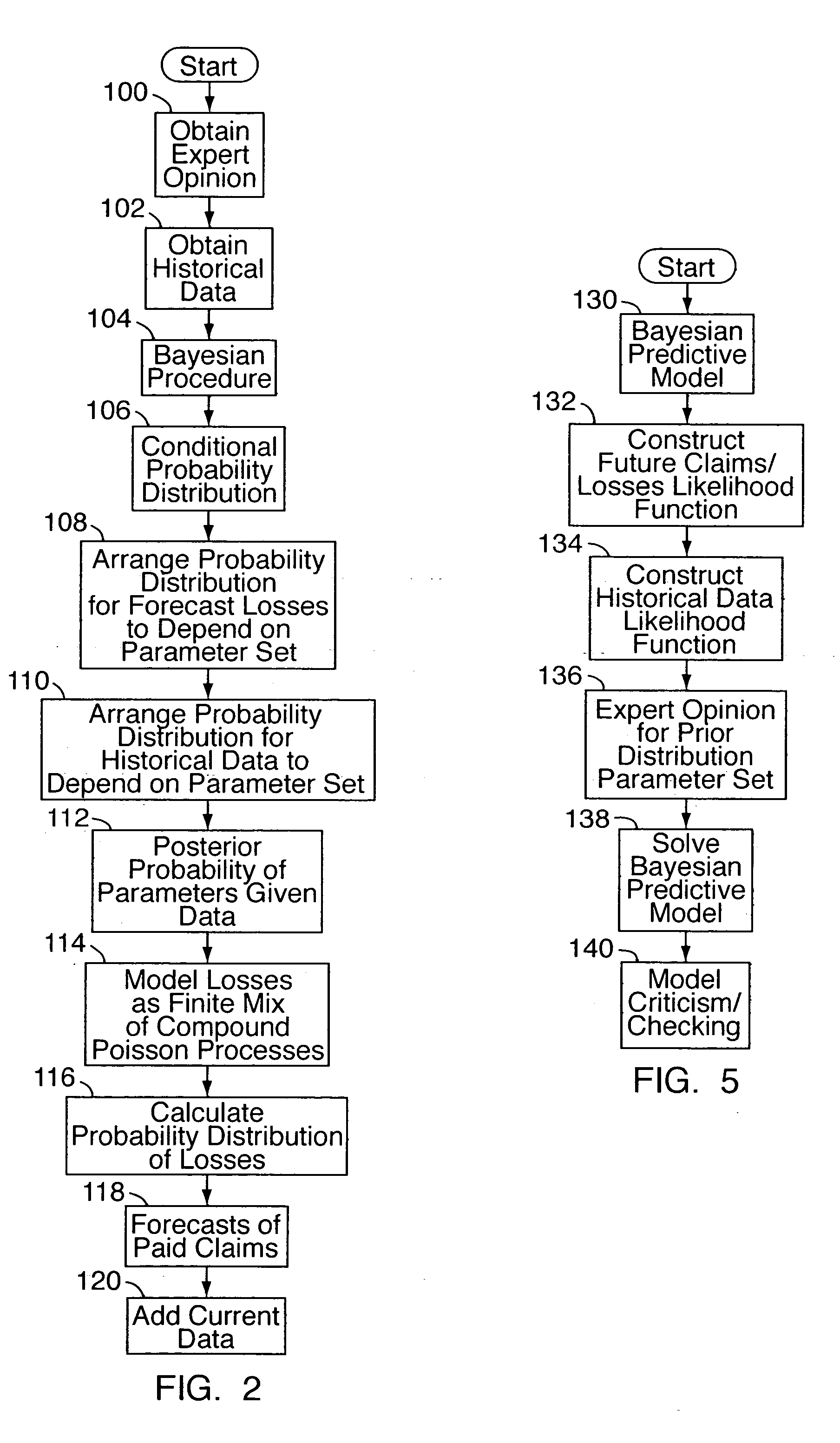Method of determining prior net benefit of obtaining additional risk data for insurance purposes via survey or other procedure
a risk data and survey method technology, applied in the field of data processing, can solve the problems of less accurate data curves generated by such methods, inability to effectively assess individual risks using such methods, and less on-hand data
- Summary
- Abstract
- Description
- Claims
- Application Information
AI Technical Summary
Benefits of technology
Problems solved by technology
Method used
Image
Examples
Embodiment Construction
[0017] An embodiment of the present invention relates to a method for determining the prior net benefit of obtaining data relating to an individual risk in an insurance portfolio, via a survey or similar procedure, for use in a predictive model or otherwise. (By “individual risk,” it is meant a single insured property, e.g., a building, item of equipment, vehicle, company, person, or parcel of land, as well as a grouping of such insured properties.) The method produces as an output a quantitative estimation (e.g., dollar value) of the net benefit of obtaining survey data relating to a risk, calculated as the benefit of the survey less the cost of the survey, where the benefit of the survey relates to a quantitative increase in predictive accuracy resulting from incorporating the survey data into the predictive model. With prior knowledge of a survey's net benefit, either positive or negative, it is possible to make a more informed decision as whether or not to carry out a survey for...
PUM
 Login to View More
Login to View More Abstract
Description
Claims
Application Information
 Login to View More
Login to View More - R&D
- Intellectual Property
- Life Sciences
- Materials
- Tech Scout
- Unparalleled Data Quality
- Higher Quality Content
- 60% Fewer Hallucinations
Browse by: Latest US Patents, China's latest patents, Technical Efficacy Thesaurus, Application Domain, Technology Topic, Popular Technical Reports.
© 2025 PatSnap. All rights reserved.Legal|Privacy policy|Modern Slavery Act Transparency Statement|Sitemap|About US| Contact US: help@patsnap.com



